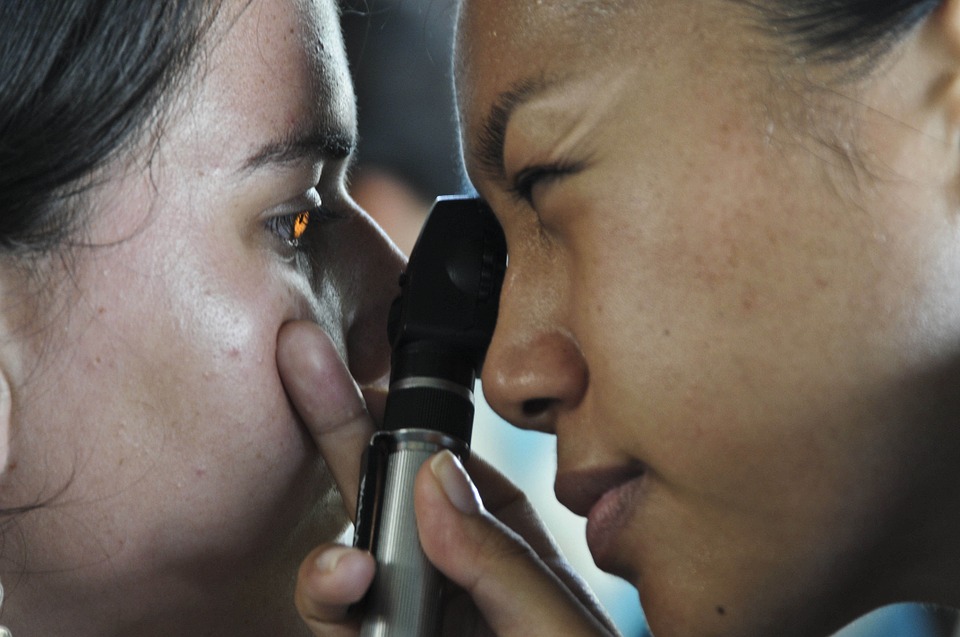
According to the American Association for Pediatric Ophthalmology and Strabismus, approximately 4% of Americans have crossed eyes or some other type of strabismus. On our blog, we explore what causes strabismus and how it can be corrected.
Eye turns, crossed eyes, wall eyes, wandering eyes, deviating eyes, and more. These common terms are often associated with strabismus, an eye condition that causes one eye to turn in another direction when the patient is focused on a particular object. The eyes should work together as a team, but when one eye veers off in another direction, it could be a sign of strabismus.
According to the American Association for Pediatric Ophthalmology and Strabismus, approximately 4% of Americans have crossed eyes or some other type of strabismus. So what causes strabismus and how can it be corrected? Strabismus surgery is the option many turn to if they have been experiencing deviating eyes. Let's take a look at strabismus, what may cause it, and how strabismus surgery can correct the problem.
Understanding Strabismus
Strabismus is a disorder in which the two eyes do not line up in the same direction. One eye may focus straight ahead, but the other eye turns in another direction. This lack of coordination can result in double vision or amblyopia (lazy eye). Strabismus can affect both children and adults, but it is more common in young children.
There are different types of strabismus, including:
- Esotropia: inward turning of one or both eyes
- Exotropia: outward turning of one or both eyes
- Hypertropia: upward turning of one or both eyes
- Hypotropia: downward turning of one or both eyes
Causes and Symptoms of Strabismus
Strabismus can develop for a variety of reasons, but the most common causes are genetics, problems with the brain's fusion center, and muscular or nerve injuries. While adults can develop crossed eyes, this condition is often discovered in babies and is much easier to treat early on. Common symptoms for both adults and children could include:
- Double vision or inability to control eye movement
- Headaches
- Eye strain or fatigue
- Difficulty reading or focusing on objects
- Tilting the head to see straight
Diagnosing Strabismus
Eye care professionals diagnose strabismus when they ask patients to focus their eyes on an object in the distance (about 20 feet away), something nearby (about 13-16 inches away), and by looking up, down, left, and right. While some patients may experience constant strabismus, others may only become cross-eyed intermittently, such as when they are ill or in a stressful situation.
Eye doctors can determine if the patient's glasses are causing the problem or if it's a brain issue. Some people recommend prism glasses, while others, who have more of a brain-related problem, may need to undergo surgery to correct the wandering eye.
Strabismus Surgery
Strabismus surgery is also known as extraocular muscle surgery, eye muscle surgery, or eye alignment surgery) is surgery on the extraocular muscles to correct strabismus, the misalignment of the eyes. This surgery involves tightening, loosening, or repositioning one or more of the eye muscles to realign the eyes and improve their ability to work together. The goal is to achieve improved alignment so that the patient has a better chance of developing binocular vision.
The surgery is typically done with the patient awake and the operated eye numbed. Adults undergoing surgery can use either local or general while children undergo general anesthesia. The procedure itself only takes one to two hours, but patients are required to be at the surgery site for a few hours as well for postoperative recovery.
When considering strabismus surgery, several factors are taken into consideration:
Age: Strabismus surgery can be performed on children as young as six months old, but it is more common in school-aged children and adults.
Severity: The degree of eye misalignment and its impact on vision will determine the type of strabismus surgery that may be needed.
Type of Strabismus: Different types of strabismus require different surgical approaches. For example, horizontal strabismus may require surgery on the lateral recti muscles, while vertical strabismus may require surgery on the superior or inferior oblique muscle.
Underlying Causes: If the misalignment is caused by a neurological issue or injury, additional procedures may be needed to address these underlying causes.
Our Care
In April, Everett and Hurite's Pamela Huston and Dr. Darren Hoover presented their latest research on eye muscle surgery at the American Association of Pediatric Ophthalmology and Strabismus meeting in Nashville, Tennessee. A majority of eye muscle surgeries involve weakening the eye muscles and strengthening others, but Huston and Hoover presented a different approach. The folding, also known as plication, of a rectus eye muscle is an alternative method of care that is not used frequently.
Through research, Huston and Hoover discovered that success rates were similar, but re-operation rates were lower for patients receiving the plication procedure. This method takes less time, is less painful, and lowers the risk of further damage to the patient. The presentation is a great example of how Everett and Hurite consider the latest research and seek better care for our patients as a whole.
Concerned about your eye health after experiencing some of the symptoms above? Do you think you may need strabismus surgery? Do you have concerns about your upcoming surgery? Everett and Hurite’s staff can assist you with questions about strabismus and any other eye concerns you may have.Schedule an appointment by contacting us today!
Frequently Asked Questions
Will I need glasses after strabismus surgery?
Yes, if you have pre-existing vision problems, such as nearsightedness or farsightedness, you will still need glasses or contacts after surgery. Strabismus surgery is meant to correct the alignment of your eyes, not improve vision.
Can adjustable suture surgery be used to correct strabismus?
Yes, adjustable suture surgery is a common method for correcting strabismus. This type of corrective surgery allows the surgeon to adjust the tension in the eye muscles by manipulating the sutures attached to them.
How are the eye muscles attached during strabismus surgery?
During strabismus surgery, the surgeon will make a small incision in the conjunctiva (the thin membrane covering the white part of your eye) to access the eye muscles. The muscle is then detached from its original insertion point and reattached to a new location using sutures.
Can adjustable sutures be used for all types of strabismus?
No, adjustable sutures may not be suitable for all types of strabismus. They are commonly used for horizontal and vertical strabismus, but other surgeries may be more appropriate for treating other types, such as oblique or cyclovertical strabismus. It is important to discuss with your eye doctor at Everett and Hurite to determine the best treatment option for your case.
Can shortened muscles be corrected with strabismus surgery?
Yes, shortened muscles can be corrected during strabismus surgery by either lengthening them or using other techniques, such as adjustable sutures. The surgeon will assess the individual case and determine the best approach for correcting the muscle.
